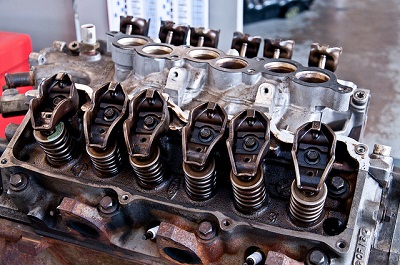Aftermarket vs. OEM Parts (Our Side of the Story)
Collision repair can be a tricky industry; we are constantly torn between trying to keep our customers happy and trying to keep the insurance companies happy. We are required by a lot of insurance companies to use aftermarket or used parts for repairs, as this helps keep the cost of the repairs low thus keeping monthly premiums lower too. Sounds like a win-win situation right? Well, this is where things can get complicated. Aftermarket parts have a bad reputation as far as their quality goes, and honestly, it can be a gamble. Some or most aftermarket parts are very comparable to OEM parts, but not all. Below we’ll discuss the pros and cons of aftermarket parts.
Pros of Aftermarket Parts
Price: In a perfect world we would use all OEM parts and those parts would be priced fairly, but think of it this way. If there were no aftermarket parts OEM vendors could mark up the costs of the parts as much as they wanted. Thankfully, aftermarket parts help control the industry standards and basically require OEM prices to stay realistic.
Selection: Have you ever bought a new car and even though you loved the car, the wheels and tires made you look like you were a soccer mom, or maybe the stereo just wasn’t cutting it? Where do you turn? That’s right! Aftermarket parts. With a huge selection of styles and looks, the possibilities with aftermarket parts are endless.
Total Loss Prevention: Let’s say you drive a car that is ten years old or older and you get in an accident. Unless you really want your car to be a total loss we likely wouldn’t suggest using OEM parts. In fact, some dealers even discontinue making parts for older models, which then forces shops to turn to aftermarket or used parts.
Cons of Aftermarket Parts
Poor fit: We cannot tell you how frustrating it is to order aftermarket parts for a car that we promised would only take 2-3 days to repair and upon receiving those parts we find that they don’t fit the car properly. The return rate of aftermarket parts is likely upwards of 60%. Luckily, we have learned to expect this and we always have a backup plan, (that’s right OEM.) We just simply take a few pictures to send the insurance company and we order the correct, properly fitting parts that were specifically made for that car.
Quality: The old saying “you get what you pay for” can really ring true with aftermarket parts. It’s not always the case, but like we said, it can be a gamble. Here at Cascade, though, we do trust all our aftermarket vendors and we always make sure there is a warranty on the parts.
We highly suggest as a consumer that you do your homework. Find what works best for your situation and make sure you tell your shop specifically what you expect. Remember, as a collision repair shop, our hands can be tied. We have to answer to the car’s owner and the people paying for the repairs, that’s right, the insurance company. When the insurance companies say they won’t pay for something you better believe they mean it. So make sure you have the OEM vs. AM part conversation with your insurer BEFORE you drop your car off at the shop to be fixed. If you request OEM from the beginning, they will respect that and if they don’t you probably shouldn’t do business with them.
In closing, we’d like to go on record and say our customer’s safety is the most important thing when we repair cars. If the quality isn’t there and we don’t feel like we could warranty that part for the lifetime of your vehicle, we won’t use it. When getting any repairs, make sure you trust the body shop. Make sure the shop you choose has a good reputation and ask about their warranty – if they don’t guarantee their work, shop around. Cascade does provide a warranty on the repairs we do.
Photo credit: taylor.a / CC BY


